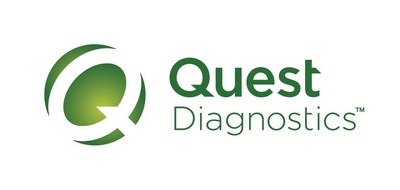High Rates of Chronic Hepatitis B and Tuberculosis Co-Infection Observed in Nationally Representative Quest Diagnostics Study
A recent Quest Diagnostics study highlights that only 1 in 3 patients with latent tuberculosis (TB) were also tested for chronic hepatitis B (HBV), despite shared risk factors. The analysis evaluated nearly 23 million lab tests from 2016 to 2020, revealing a significant gap in concurrent testing.
This raises concerns as TB therapies can induce liver damage in co-infected patients. Notably, 19.6% of those with chronic HBV also had latent TB, emphasizing the need for routine HBV screening prior to TB treatment.
- Study identifies a substantial prevalence of HBV and latent TB co-infection, aiding public health initiatives.
- Provides novel insights into demographic trends, enhancing strategies for patient care.
- Only 32.3% of patients with latent TB were also tested for HBV, highlighting a significant gap in healthcare practices.
- Potential for increased liver injury risk due to inadequate screening prior to TB treatment.
Insights
Analyzing...
Analysis of nearly 23 million lab tests finds only 1 in 3 patients with latent tuberculosis were also tested for chronic hepatitis B, despite similar risk factors in patients
Findings heighten caution about use of tuberculosis therapies, which raise risk of liver injury in patients co-infected with chronic hepatitis B virus
SECAUCUS, N.J., July 25, 2022 /PRNewswire/ -- Concurrent testing for chronic hepatitis B (HBV) and tuberculosis (TB) occurs in a minority of patients who test positive for either condition, despite similar risk profiles and, for some, risk of TB therapy-induced liver damage, according to a new Quest Diagnostics Health Trends® study published in the Journal of Public Health Management & Practice.
The study was conducted by researchers from Quest Diagnostics (NYSE: DGX), Stanford University School of Medicine and the Veterans Affairs Palo Alto Health Care System in Palo Alto, Calif. Based on analysis of results of 17,635,261 deidentified laboratory tests for hepatitis and 5,205,393 tests for TB performed by Quest Diagnostics between 2016 and 2020, the study is the most comprehensive assessment of testing patterns and prevalence estimates of these two infectious diseases. Existing research to date is limited by small study size and decades-old data.
The researchers evaluated deidentified data from HBV surface antigen (HBsAg) and core antibody total (HBcAb) tests as well as the QuantiFERON® and T-SPOT®.TB series of Interferon Gamma Release Assay (IGRA) blood tests to assess latent TB infection. IGRA tests are guideline recommended for many patients and generally considered more efficient and accurate than skin prick tests, which require multiple doctor's appointments[i][ii][iii].
Latent TB infection was defined as having either a positive QuantiFERON or T-SPOT® test with no positive results for Mycobacterium tuberculosis (MTB) complex or mycobacterial culture during the study period (as that would indicate active TB infection). The QuantiFERON or T-SPOT® tests do not differentiate between active and latent.
Among patients tested for both infections, nearly one in 5 (
Among the study's most significant findings is that only one in three (
The authors of the study wrote that the prevalence of co-infection is "substantial" and highlights the need to test for co-infection "to mitigate risk of drug-induced liver injury associated with TB medications in patients with concurrent chronic HBV."
According to lead author Robert Wong, M.D., Clinical Associate Professor, Stanford University, "This study is the first large scale analysis to my knowledge of coinfection of TB and HBV, two prevalent and under-screened and under-treated infectious diseases in the United States. Timely identification of underlying hepatitis B co-infection can help guide modification of TB treatments regimens with lower risk of drug-induced liver injury. This analysis identified an important gap in TB management and suggests the need for quality improvement initiatives to ensure routine HBV screening in TB patients prior to start of treatment."
Other findings showed that concurrent testing rose with increasing age, from
"Our nationally representative study provides important novel insights into the scale of coinfection of both latent TB and HBV," said co-author Harvey W. Kaufman, M.D., Senior Medical Director and Director of the Health Trends research program for Quest Diagnostics. "It also provides important insight into demographic and regional patterns that may help guide public health and clinical decision making."
The Centers for Disease Control and Prevention (CDC) estimates that there are 862,000 people living with chronic HBV infection in the United States.[iv] The CDC also estimates that there were 7,860 reported TB cases in the United States in 2021, although as many as 13 million people, many born outside the United States, have latent TB infection.[v] Latent TB and chronic HBV both often lack symptoms, and, in some patients, can progress to acute disease, causing liver damage or failure. Delays in diagnosis and treatment for latent TB and chronic HBV are associated with significant morbidity and mortality, and result in 7 and 14 years per life lost, respectively.
The CDC also notes that rates of new HBV infections are highest among adults aged 40-49 years, reflecting low hepatitis B vaccination coverage among adults. HBV infection is associated with intravenous drug use related to the opioid crisis, incarceration, homelessness and other social determinants of health. Given comparatively high rates of infection in much of Asia, individuals of Asian descent in the United States are also more likely to be infected with chronic HBV even without other risk factors, according to the CDC.
The study's strengths include national scale and results of quality laboratory testing methods. Weaknesses include lack of medication and other clinical data to identify patterns in treatment.
Quest Diagnostics Health Trends™ is a series of scientific reports that provide insights into health topics, based on analysis of objective clinical laboratory data, to empower better patient care, population health management and public health policy. The reports are based on the Quest Diagnostics database of 60 billion de-identified laboratory test results, believed to be the largest of its kind in healthcare. Health Trends has yielded novel insights to aid the management of allergies and asthma, prescription drug monitoring, diabetes, Lyme disease, heart disease, influenza and workplace wellness. Quest Diagnostics also produces the Drug Testing Index (DTI)™, a series of reports on national workplace drug positivity trends based on the company's employer workplace drug testing data. https://newsroom.questdiagnostics.com/health-trends
Quest Diagnostics empowers people to take action to improve health outcomes. Derived from the world's largest database of clinical lab results, our diagnostic insights reveal new avenues to identify and treat disease, inspire healthy behaviors and improve healthcare management. Quest annually serves one in three adult Americans and half the physicians and hospitals in the United States, and our nearly 50,000 employees understand that, in the right hands and with the right context, our diagnostic insights can inspire actions that transform lives. www.QuestDiagnostics.com
[i] T-SPOT.TB. Package insert. Oxford Immunotec Inc; 2013.
[ii] Lewinsohn DM, Leonard MK, LoBue PA, et al. Official American Thoracic Society/Infectious Diseases Society of America/Centers for Disease Control and Prevention clinical practice guidelines: diagnosis of tuberculosis in adults and children. Clin Infect Dis. 2017;64(2):e1-e33. doi:10.1093/cid/ciw694
[iii] David M. Lewinsohn, Michael K. Leonard, Philip A. LoBue, David L. Cohn, Charles L. Daley, Ed Desmond, Joseph Keane, Deborah A. Lewinsohn, Ann M. Loeffler, Gerald H. Mazurek, Richard J. O'Brien, Madhukar Pai, Luca Richeldi, Max Salfinger, Thomas M. Shinnick, Timothy R. Sterling, David M. Warshauer, Gail L. Woods, Official American Thoracic Society/Infectious Diseases Society of America/Centers for Disease Control and Prevention Clinical Practice Guidelines: Diagnosis of Tuberculosis in Adults and Children, Clinical Infectious Diseases, Volume 64, Issue 2, 15 January 2017, Pages e1–e33, https://doi.org/10.1093/cid/ciw694
[iv] Filardo TD, Feng P, Pratt RH, Price SF, Self JL. Tuberculosis — United States, 2021. MMWR Morb Mortal Wkly Rep 2022;71:441–446. DOI: http://dx.doi.org/10.15585/mmwr.mm7112a1external icon.
[v] CDC FACT SHEET TB in the United States: A Snapshot. Sept. 2018. TB in the United States (cdc.gov)
![]() View original content to download multimedia:https://www.prnewswire.com/news-releases/high-rates-of-chronic-hepatitis-b-and-tuberculosis-co-infection-observed-in-nationally-representative-quest-diagnostics-study-301591980.html
View original content to download multimedia:https://www.prnewswire.com/news-releases/high-rates-of-chronic-hepatitis-b-and-tuberculosis-co-infection-observed-in-nationally-representative-quest-diagnostics-study-301591980.html
SOURCE Quest Diagnostics








